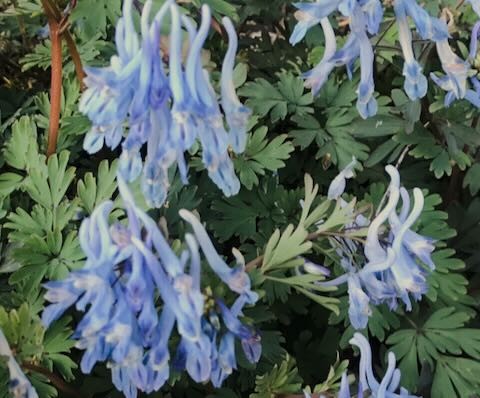
Hydrangea 'Annabelle'
White hydrangea, rounded clusters, vigorous and long flowering, colour not effected by soil pH.


Low growing plant for shade or part shade, with spreading ground covering habit and porcelian blue flowers. Prefers open textured soil and easily divided once established, combines well with other woodland plants like anemone, rodgersia, and epimedium.
Low growing plant for shade or part shade, with spreading ground covering habit and porcelian blue flowers. Prefers open textured soil and easily divided once established, combines well with other woodland plants like anemone, rodgersia, and epimedium.
Data sheet
White hydrangea, rounded clusters, vigorous and long flowering, colour not effected by soil pH.
Hand pollinated seedlings from our best dark flowered plants from imported stock.
Prolific carpeting ground cover flowering in spring, along with phlox, auriculas, and pulsatilla. They look best tumbling over a wall or in a rock garden where they get good sun and drainage.
Stunning double flowered paeonia requiring rich well drained soil in full sun, young plants often takes a year or two to establish but eventually form large clumps; we recommend removing first flowers to hasten establishment.
Spectacular clumping Iris for pond sides and moisture retentive soils, big blue flowers in summer. For grouped plantings plant 20-25cm apart for best results.
Rare white form of the usual blue, useful for ground cover in part shade or sun. Vigorous and spreading like the blue form.
Floriferous South African dwarf bulb for the rockgarden and containers. Easy and prolific, very colourful in spring, combine with thymes, cyclamen, and miniature daffodils.
A Sedum spectabile cultivar with dark terracotta red flowers. Upright habit, always reliable for late summer and autumn colour.
Old fashioned double primrose for part sun or shade in good soil. We never have many of these regretfully
A nice addition to the summer flowering pallette, this persicaria has a softer colour than 'Taurus' with similar good qualities of long flowering and good foliage and infill. Best on heavier fertile soils.
One of the best variegated cultivars with bright green leaves and white margins. A fine architectural plant with Dicentra and shade loving geraniums.
More sun tolerant than other hydrangea varieties, but adaptable to part shade also. Beautiful deciduous variety with densely clustered white panicles in summer. Lovely feature plant behind perennials with deciduous viburnums, or grouped in woodland settings.
Strawberry coloured blooms with for a sheltered morning sun position or shade, a beautiful variety that doesnt self seed as much as the usual types.
One of the earliest fruiting varieties, with tall vigorous growth habit to 2.1m. Once established, prune out central canes to keep bush open. As with most blueberries, fruit production is improved by planting other varieties nearby. Sweet fruit which stores and freezes well, perfect for jams, pies, or just eaten fresh.
Beautiful grey foliage variety with musk pink flowers in early summer. Trim as lavenders and salvia.
A vigorous ornamental allium with large pinkish purple spherical flowers on tall wiry stems. Attractive in mass border plantings or in parterre gardens, also a much sought after cut flower. Can self seed so trim off unwanted seed heads when flowers have lost colour.

Low growing plant for shade or part shade, with spreading ground covering habit and porcelian blue flowers. Prefers open textured soil and easily divided once established, combines well with other woodland plants like anemone, rodgersia, and epimedium.